Observations from the Brazilian Amazon: Attending “O Chamado do Cacique Raoni”
August 2023At the end of July, I traveled to the Xingu Indigenous Park, a recognized and protected Indigenous territory in the state of Mato Grosso, Brazil, to attend the event “O Chamado do Cacique Raoni” (the Call of Chief Raoni).
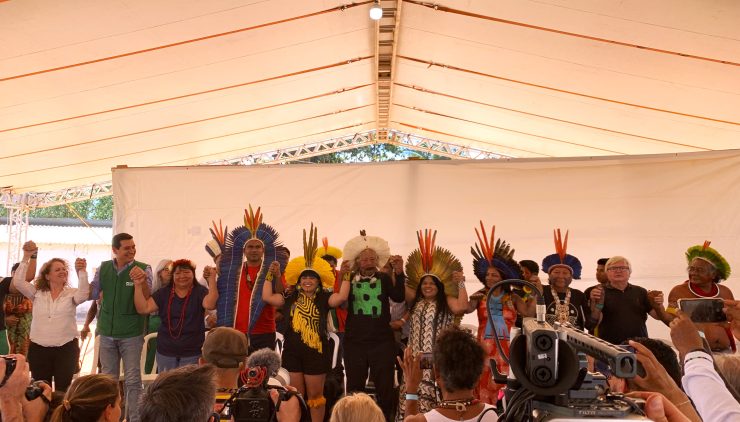
By Nathalya Desterro, Vance Center Environment Program Advisor
The Call of Chief Raoni was the second event of its kind, described by organizers as a “great global gathering of Mother Earth guardian leaders.” More than a thousand attendees, including more than 800 people representing about a dozen different Indigenous communities, came to celebrate the nominal 91st birthday of Indigenous leader Chief Raoni Metuktire, acknowledge his decades of leadership on environmental issues and bring attention to the voices of Indigenous communities on the Amazon region, the climate, and more.
Chief Raoni is an iconic Indigenous leader who has spent much of his long life advocating for environmental protection, Indigenous rights, and demarcation of Indigenous land in Brazil. He gained international visibility following an acclaimed 1978 documentary about him and his community and has remained in the global spotlight for his activism, with support from high-profile advocates like the musician Sting.
As Chief Raoni ages and has publicly stated that his days as a prominent activist may be coming to an end, the event offered an opportunity to inspire Indigenous youth to continue his work and for the next generation of leaders to step up.
The gathering in July stretched over five days: three of them dedicated to meetings among Indigenous leaders, and an additional two days that opened the space to civil society partners and other guests welcomed by invitation only. This was my first time visiting an Indigenous community and participating in a celebration like this.
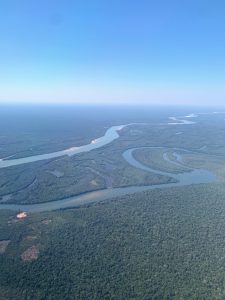
The view of the Amazon from the flight to Sinop.
Just arriving in the Xingu territory was an adventure on its own. I began with a flight from New York City, where I reside, to Rio de Janeiro, where I grew up. Then on July 25, I took two flights to get from Rio to Sinop, the closest town to the Indigenous territory accessible by commercial flight. I arrived in Sinop, a small city of about 200,000 that was mostly rainforest as recently as a few decades ago, around midnight, and spent the night at a hotel before joining four other women on a five-seater charter flight to the Xingu territory at lunchtime. Due to unexpected complications, we couldn’t land at the “aldeia” (the territory’s population center), so the pilot took us to the next closest town of São José do Xingu, from which we took a two-hour ride in a few SUVs to arrive at the aldeia right before dinner. It was enough time to set up our hammocks in the compound, meet the people we would sleep next to, and learn about the facilities (and of course, connect to the Starlink Wi-Fi).
Many representatives of the Brazilian government attended the event, including Sonia Guajajara, Brazil’s Minister of Indigenous Peoples; Joênia Wapichana, the president of the Indigenous Affairs Agency (FUNAI, for its name in Portuguese); and several elected members of Brazil’s House of Representatives. The international guests in attendance reflected Chief Raoni’s global profile: Melanie Hopkins, the Deputy Head of Mission at the British Embassy in Brasilia, brought a letter from King Charles III to Chief Raoni, in which the king recognized the importance of Chief Raoni’s leadership in the efforts to preserve the Amazon, recollected meeting Chief Raoni and welcoming him at the Clarence House royal residence in 2009, and noted the UK’s support for the event through the REDD+ Early Movers forest conservation program and the organization Global Canopy.
Another highlight of the event was the incredible infrastructure set up to house, feed, and support the hundreds of guests, which included temporary kitchens, lodging, and bath installations; live translation of the presentations into half a dozen different languages, including English and different Indigenous languages; and the inclusion of women and “cacicas” (female chiefs) throughout the event. Indigenous Peoples Minister Sonia Guajajara also took the opportunity to announce that, after more than 20 years, the Brazilian government is moving ahead with proceedings to demarcate Kapot Nhinore, where Chief Raoni was born, as Indigenous territory.
The main output of the Call of Chief Raoni was a manifest addressed to Brazilian President Luiz Inácio Lula da Silva. The letter reinforced the position of Indigenous leadership against a bill currently under analysis at Brazil’s Supreme Court of Brazil, which could severely restrict the demarcation of Indigenous territory in Brazil. The letter made several other requests, including the demarcation of all Indigenous territory, prioritizing areas currently under litigation; calling on the Brazilian government to respect the right to free, prior and informed consent (FPIC) and apply relevant international instruments and domestic legislation regulating it; and strengthening administrative institutions that support the rights and interests of Indigenous peoples.
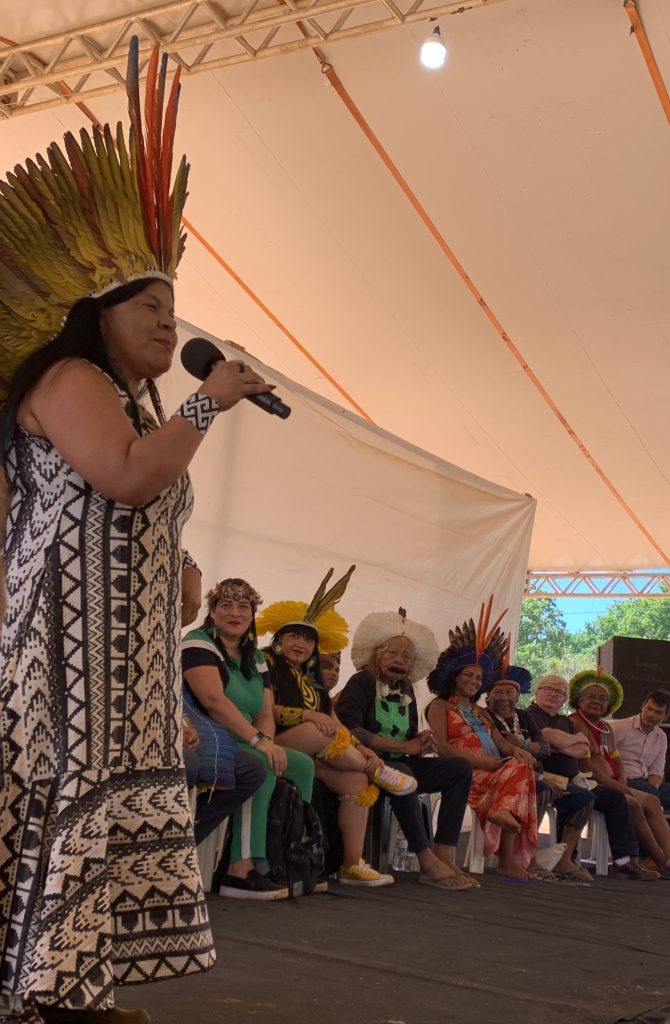
Brazilian Minister of Indigenous Peoples Sonia Guajajara addresses attendees.
The manifest was signed by more than 50 Indigenous leaders and subsequently presented at the Amazon Summit, a gathering of the Amazon Cooperation Treaty Organization (ACTO), hosted by Brazil from August 8-9 and attended by eight countries with Amazonian territory (Bolivia, Brazil, Colombia, Ecuador, Guyana, Peru, Suriname, and Venezuela). The Summit produced a declaration signed by the eight countries; however, although the statement recognized a commitment to environmental preservation and to protecting Indigenous rights territory, it failed to commit to other key objectives, such as zero deforestation, or to set concrete goals or timeframes to achieve its commitments.
Indigenous lands are home to some of the best-conserved forests in the world. With those lands holding invaluable resources sought by many industries and illicit economic actors, many Indigenous people act as human rights and environmental defenders, which often leads to threats and violations of their rights. According to Global Witness, 177 land and environmental defenders were killed in 2022, 36% of which were Indigenous people.
Attending the Call of Chief Raoni was an opportunity to meet people and organizations working to further Indigenous rights and who might become future Vance Center partners. The event was also an opportunity to showcase the work the Vance Center has been doing in the field and invite leaders to workshops that we co-sponsored with our ongoing client and partner, Women’s Earth & Climate Action Network, International (WECAN). The workshops, held on August 22, presented an overview of findings from the outcome reports on FPIC and the Escazú Agreement from two previous projects with WECAN, discussed the interaction between the principle of FPIC and the Escazú Agreement, explored how environmental and land defenders can use their experience with FPIC to further implementation of the Escazú Agreement, and how the treaty can support Indigenous rights.
The Vance Center has worked for years on cases related to the rights of Indigenous peoples and territories and supporting Indigenous communities, so answering the Call of Chief Raoni offered an exciting new way to strengthen our work on these critical issues and continue building partnerships across the Amazon region.
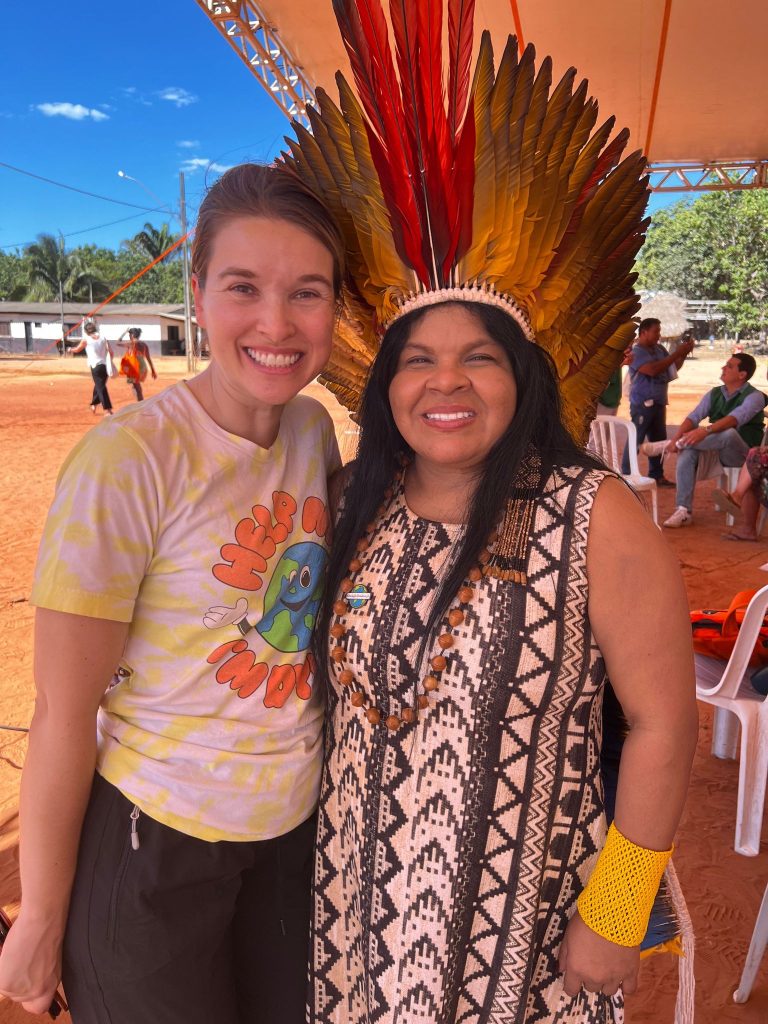
Nathalya Desterro with Brazilian Minister of Indigenous Peoples Sonia Guajajara.
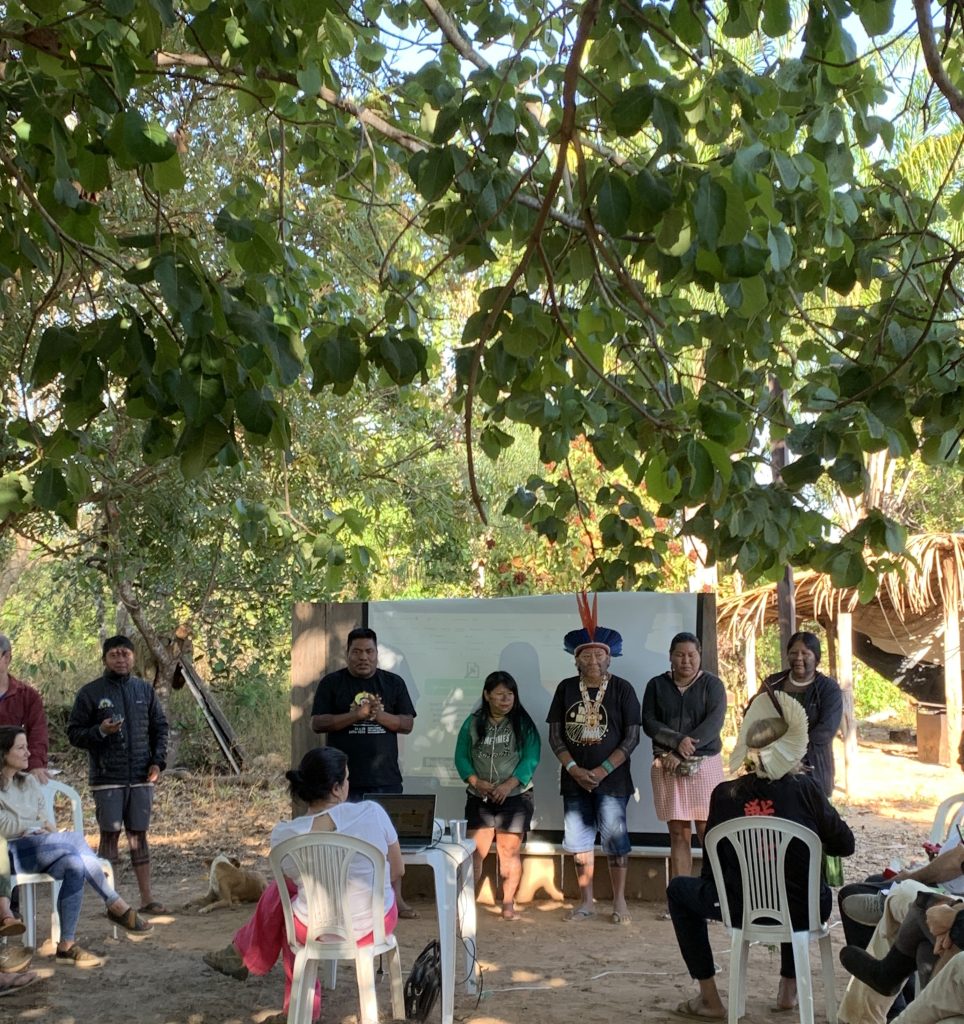
Speakers from Indigenous communities present at a session during the event.
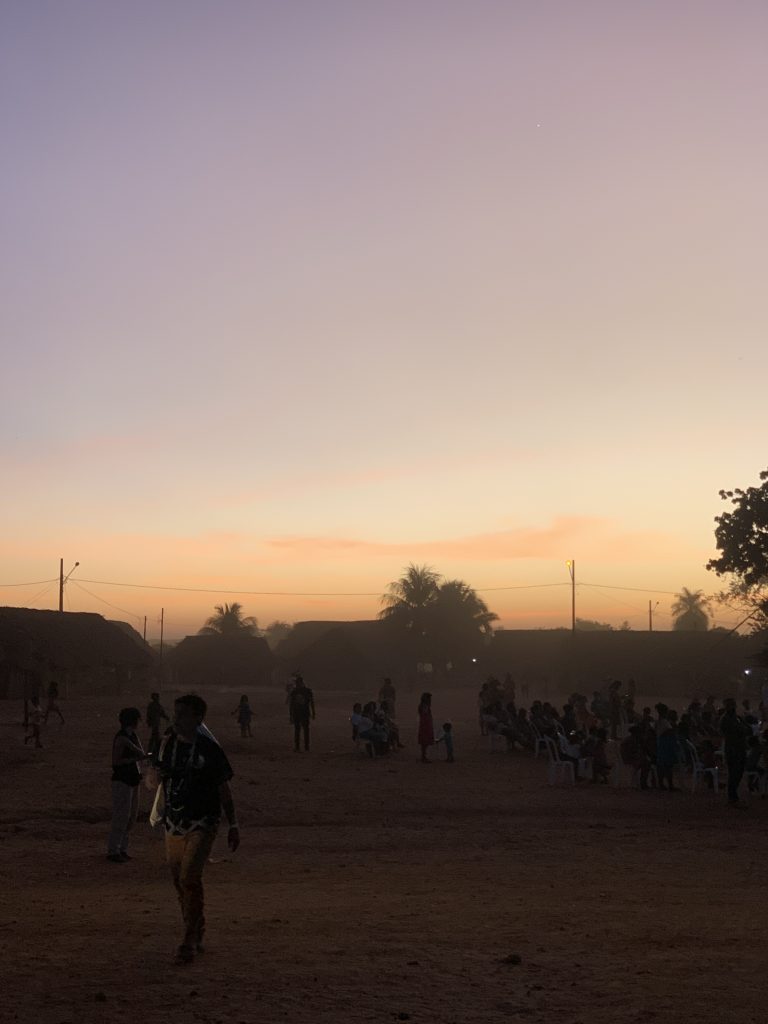
The aldeia at dusk.
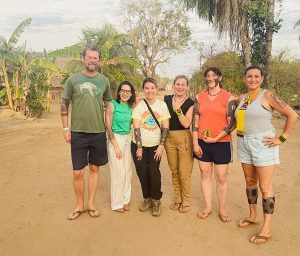
Nathalya Desterro with other civil society participants at the Call of Chief Raoni.

